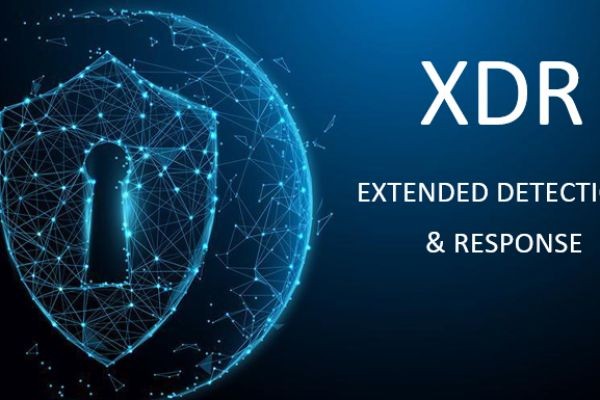In the age of rapid software development and deployment, Continuous Integration and Continuous Deployment (CI/CD) pipelines have become critical to DevOps practices. However, their speed and automation also introduce new attack surfaces that adversaries are eager to exploit. Traditional security approaches often fail to protect these dynamic environments. That’s where Extended Detection and Response (XDR) steps in — providing unified, intelligent, and proactive defense across the entire CI/CD lifecycle.
In this blog, we’ll explore the challenges of securing CI/CD pipelines, how XDR helps mitigate risks, and best practices to implement XDR in DevSecOps workflows.
The Unique Security Risks of CI/CD Pipelines
CI/CD pipelines are inherently complex and involve multiple components such as source code repositories, build servers, container registries, deployment platforms, and APIs. Here are some common threats targeting them:
1. Code Injection and Supply Chain Attacks
Malicious code can be injected into the pipeline via compromised repositories, third-party dependencies, or build scripts — impacting the entire software supply chain.
2. Credential Theft
CI/CD tools often require secrets (tokens, SSH keys, etc.) to access systems and services. If not properly secured, attackers can harvest these for lateral movement or privilege escalation.
3. Misconfigured Tools and Services
Poor configurations, such as overly permissive access controls or exposed services, can open doors to exploitation.
4. Insider Threats
Internal actors with elevated privileges may intentionally or inadvertently compromise the pipeline.
5. Automated and Fast-Moving Attacks
Due to automation, a single point of compromise can propagate quickly through environments, especially when security visibility is lacking.
How XDR Secures CI/CD Pipelines
Extended Detection and Response (XDR) is designed to integrate and correlate telemetry from multiple sources — endpoints, network traffic, cloud workloads, identity systems, and applications — to provide comprehensive threat detection and response. Here’s how it helps in securing CI/CD pipelines:
1. Holistic Visibility Across DevOps Ecosystem
XDR connects data from build servers, containers, VMs, repositories, cloud platforms, and more, offering a unified view of activity across the pipeline. This helps in spotting anomalies or suspicious behaviors that would be missed in isolated systems.
2. Behavioral Analytics and Anomaly Detection
By analyzing behavioral baselines of users, applications, and systems, XDR can detect anomalies like:
-
Sudden changes in build patterns
-
Irregular access to secrets
-
Unexpected outbound network calls from build agents
This is crucial for catching zero-day attacks or insider threats before they cause damage.
3. Real-Time Threat Detection and Response
XDR platforms provide automated alerts and response mechanisms. For example:
-
Automatically quarantining compromised build agents
-
Revoking leaked credentials
-
Blocking malicious IPs interacting with deployment systems
This minimizes dwell time and prevents attackers from pivoting deeper into the infrastructure.
4. Correlation of Threat Signals
XDR links seemingly disparate events — e.g., a GitHub token misuse, followed by unusual container behavior — to identify multi-stage attacks that traditional tools might overlook.
5. Integration with DevSecOps Tools
Modern XDR solutions support integrations with tools like Jenkins, GitHub, GitLab, Kubernetes, and cloud services (AWS, Azure, GCP), ensuring security doesn't slow down the development process.
Use Cases: XDR in Action for CI/CD
Compromised Build Server Detection
An attacker exploits a Jenkins plugin vulnerability. XDR detects unusual process execution and network traffic from the Jenkins agent to an external C2 server, triggering an automated response to isolate the server and block outbound traffic.
Credential Abuse Prevention
A stolen GitHub access token is used from a suspicious location. XDR correlates this with recent IAM events and suspicious code changes, revokes access, and alerts the DevSecOps team immediately.
Anomaly in Container Behavior
A container deployed through CI/CD begins making DNS queries to suspicious domains. XDR identifies this behavioral deviation, flags the container, and rolls back the deployment automatically.
Best Practices to Protect CI/CD with XDR
To get the most out of XDR in securing your CI/CD pipeline, consider the following best practices:
1. Enable End-to-End Telemetry
Ensure your XDR platform is collecting data from every CI/CD component — source control, build tools, deployment systems, and runtime environments.
2. Use Deception and Honeypots
Deploy fake secrets or decoy repositories to trap malicious insiders or automated bots, and let XDR monitor access attempts.
3. Integrate with IAM and Secrets Management
Correlate identity-based anomalies with code and pipeline events to catch compromised credentials early.
4. Automate Incident Response
Define playbooks for common threats — e.g., credential leakage, code tampering — so that XDR can take immediate action without waiting for manual triage.
5. Include Security in CI/CD Pipelines
Shift security left by integrating security checks (SAST, DAST, secret scanning, dependency analysis) into your pipelines and feed the results into your XDR for correlation.
The Future: DevSecOps Powered by XDR
As organizations adopt DevSecOps and build cloud-native architectures, security must keep pace with the speed of development. XDR is a game-changer for protecting CI/CD pipelines — offering proactive defense, rich context, and real-time protection without hampering agility.
By embedding XDR into the software delivery lifecycle, teams can detect and stop attacks early, reduce the blast radius of breaches, and ensure secure, reliable deployments.
Final Thoughts
CI/CD pipelines are the lifeblood of modern software development — but they are also prime targets for sophisticated cyber threats. XDR provides the visibility, intelligence, and automation necessary to protect these complex environments from end to end.
For security leaders and DevOps teams alike, integrating XDR into the pipeline is not just a best practice — it's a business imperative.

